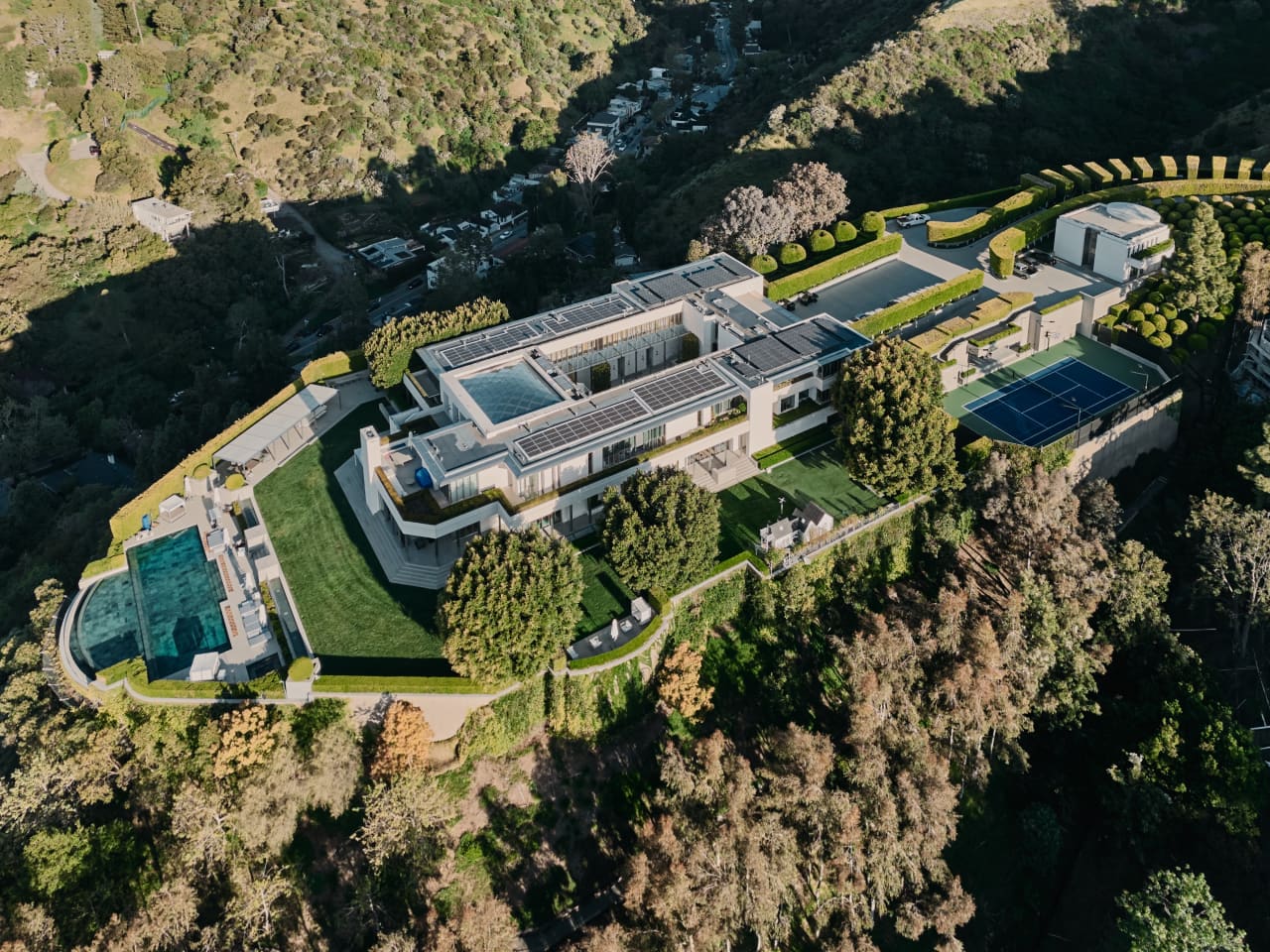Former Wells Fargo Advisors Sue the Company Over Cross-Selling
Two former Wells Fargo advisors are suing the firm for breach of contract, unfair business practices, and retaliation after they say they resisted pressure from their supervisors to secretly transfer sensitive client information from the advisor and brokerage side of the company to the private bank.
The advisors, Karen Keusayan and Richard Green, are also alleging that Wells Fargo improperly withheld deferred compensation after they resigned in 2021 and joined Morgan Stanley , where they are still registered.
In their complaint, filed in Los Angeles County Superior Court, the advisors describe themselves as high-producing employees who were loyal to the company even through the “nightmarish” years of 2015 to 2017, when Wells Fargo’s banking division was “publicly scorned” for the fake account scandal.
“This is not the ‘sour grapes’ case of a disgruntled employee(s) who sought a promotion and did not get one,” the advisors say in their complaint. “Neither Ms. Keusayan nor Mr. Green ever wanted to leave Wells Fargo. The goal for each had always been to retire at Wells Fargo.”
Wells Fargo declined to comment on the lawsuit.
The two advisors joined forces in 2015 to form a “production partnership,” according to the complaint, which says they grew their book of business to more than $1 billion by 2020.
In 2018, Wells Fargo introduced a new element to its advisor compensation plan, according to the complaint. Advisors were expected to complete forms called client discovery reviews, or CDRs, detailing information about advisory clients. The plaintiffs say they were directed by a compliance officer to keep the forms secret from the clients themselves.
Instead, the CDRs were intended for Wells Fargo’s private bank, “not the broker-dealer/financial services side where plaintiffs worked,” according to the complaint.
They contend that advisors were pressured to work with clients to complete CDRs, which would be secretly shared with Wells Fargo private bankers who could use them as sales leads.
Before submitting the forms to count toward a quota that resulted in additional compensation, the advisors had to check three boxes stating that they had discussed the information with the client, that the information was accurate, and that they had offered the client an opportunity to obtain a copy of the document. On that last item, the plaintiffs allege that Wells Fargo essentially instructed the advisors to lie, explaining that the document didn’t belong to the advisors, but the bank, even though the information came from their own clients.
“[H]igh-ranking compliance personnel at Wells Fargo Advisors repeatedly told plaintiffs to never deliver or present the CDR to the client since, as it was explained by compliance, the CDR was a bank document,” the complaint states. “Worse, plaintiffs were told not to inform the client that a CDR had been prepared.”
The plaintiffs say that these “dishonest instructions” put them in an “impossible position” and that they soon began raising concerns with their superiors. But each time they spoke out, they were told by their supervisors to continue submitting the forms as a requisite part of the company’s compensation plan.
The complaint describes the advisors’ growing unease with being pressured to falsify the CDR submission document, as well as concerns over the personal privacy of their clients, whose information was allegedly being shared internally without their knowledge or permission.
The advisors say that their bosses undertook a retaliatory campaign against them for continuing to raise objections to the CDR program, “including by failing to provide the banking support that plaintiffs and their clients had come to expect as a benefit of being associated with a large, full-service, retail bank,” according to the complaint.
They also say that the advisors felt their jobs were at risk, offering examples of a hostile or coercive work environment. “Mr. Green was berated by a yelling supervisor in front of fellow employees, and Ms. Keusayan was informed that the bank would not issue a routine credit card to her sister (a customer) if a CDR was not on file,” according to the complaint.
The advisors say the deteriorating work environment ultimately led them to resign around July 2021, after which they were informed that they were ineligible for large sums of deferred compensation—$662,000 for Keusayan and nearly $814,000 for Green.
The advisors are seeking to recoup the deferred comp they say they are owed, and are asking the court for additional damages, as well as an injunction barring Wells Fargo from engaging in the conduct alleged in the complaint, among other relief.
 Copyright 2020, Dow Jones & Company, Inc. All Rights Reserved Worldwide. LEARN MORE
Copyright 2020, Dow Jones & Company, Inc. All Rights Reserved Worldwide. LEARN MORE
This stylish family home combines a classic palette and finishes with a flexible floorplan
Just 55 minutes from Sydney, make this your creative getaway located in the majestic Hawkesbury region.
Impact investing is becoming more mainstream as larger, institutional asset owners drive more money into the sector, according to the nonprofit Global Impact Investing Network in New York.
In the GIIN’s State of the Market 2024 report, published late last month, researchers found that assets allocated to impact-investing strategies by repeat survey responders grew by a compound annual growth rate (CAGR) of 14% over the last five years.
These 71 responders to both the 2019 and 2024 surveys saw their total impact assets under management grow to US$249 billion this year from US$129 billion five years ago.
Medium- and large-size investors were largely responsible for the strong impact returns: Medium-size investors posted a median CAGR of 11% a year over the five-year period, and large-size investors posted a median CAGR of 14% a year.
Interestingly, the CAGR of assets held by small investors dropped by a median of 14% a year.
“When we drill down behind the compound annual growth of the assets that are being allocated to impact investing, it’s largely those larger investors that are actually driving it,” says Dean Hand, the GIIN’s chief research officer.
Overall, the GIIN surveyed 305 investors with a combined US$490 billion under management from 39 countries. Nearly three-quarters of the responders were investment managers, while 10% were foundations, and 3% were family offices. Development finance institutions, institutional asset owners, and companies represented most of the rest.
The majority of impact strategies are executed through private-equity, but public debt and equity have been the fastest-growing asset classes over the past five years, the report said. Public debt is growing at a CAGR of 32%, and public equity is growing at a CAGR of 19%. That compares to a CAGR of 17% for private equity and 7% for private debt.
According to the GIIN, the rise in public impact assets is being driven by larger investors, likely institutions.
Private equity has traditionally served as an ideal way to execute impact strategies, as it allows investors to select vehicles specifically designed to create a positive social or environmental impact by, for example, providing loans to smallholder farmers in Africa or by supporting fledging renewable energy technologies.
Future Returns: Preqin expects managers to rely on family offices, private banks, and individual investors for growth in the next six years
But today, institutional investors are looking across their portfolios—encompassing both private and public assets—to achieve their impact goals.
“Institutional asset owners are saying, ‘In the interests of our ultimate beneficiaries, we probably need to start driving these strategies across our assets,’” Hand says. Instead of carving out a dedicated impact strategy, these investors are taking “a holistic portfolio approach.”
An institutional manager may want to address issues such as climate change, healthcare costs, and local economic growth so it can support a better quality of life for its beneficiaries.
To achieve these goals, the manager could invest across a range of private debt, private equity, and real estate.
But the public markets offer opportunities, too. Using public debt, a manager could, for example, invest in green bonds, regional bank bonds, or healthcare social bonds. In public equity, it could invest in green-power storage technologies, minority-focused real-estate trusts, and in pharmaceutical and medical-care company stocks with the aim of influencing them to lower the costs of care, according to an example the GIIN lays out in a separate report on institutional strategies.
Influencing companies to act in the best interests of society and the environment is increasingly being done through such shareholder advocacy, either directly through ownership in individual stocks or through fund vehicles.
“They’re trying to move their portfolio companies to actually solving some of the challenges that exist,” Hand says.
Although the rate of growth in public strategies for impact is brisk, among survey respondents investments in public debt totaled only 12% of assets and just 7% in public equity. Private equity, however, grabs 43% of these investors’ assets.
Within private equity, Hand also discerns more evidence of maturity in the impact sector. That’s because more impact-oriented asset owners invest in mature and growth-stage companies, which are favored by larger asset owners that have more substantial assets to put to work.
The GIIN State of the Market report also found that impact asset owners are largely happy with both the financial performance and impact results of their holdings.
About three-quarters of those surveyed were seeking risk-adjusted, market-rate returns, although foundations were an exception as 68% sought below-market returns, the report said. Overall, 86% reported their investments were performing in line or above their expectations—even when their targets were not met—and 90% said the same for their impact returns.
Private-equity posted the strongest results, returning 17% on average, although that was less than the 19% targeted return. By contrast, public equity returned 11%, above a 10% target.
The fact some asset classes over performed and others underperformed, shows that “normal economic forces are at play in the market,” Hand says.
Although investors are satisfied with their impact performance, they are still dealing with a fragmented approach for measuring it, the report said. “Despite this, over two-thirds of investors are incorporating impact criteria into their investment governance documents, signalling a significant shift toward formalising impact considerations in decision-making processes,” it said.
Also, more investors are getting third-party verification of their results, which strengthens their accountability in the market.
“The satisfaction with performance is nice to see,” Hand says. “But we do need to see more about what’s happening in terms of investors being able to actually track both the impact performance in real terms as well as the financial performance in real terms.”
This stylish family home combines a classic palette and finishes with a flexible floorplan
Just 55 minutes from Sydney, make this your creative getaway located in the majestic Hawkesbury region.






















